Best Clinical Communication Softwares in 2025
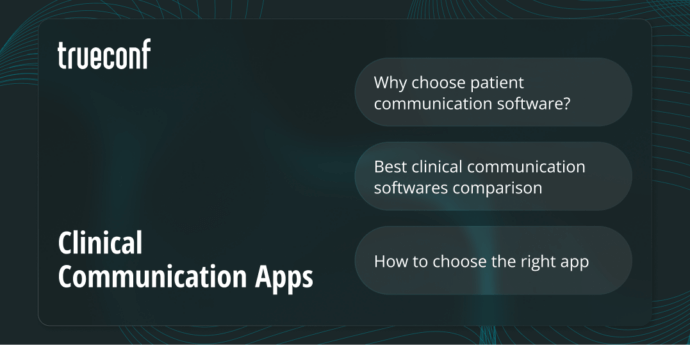
As healthcare institutions progressively rely on online collaboration, reliable and protected interaction among clinicians, patients, and personnel has grown essential. Clinical communication platforms equip medical teams with vital resources to organize care, distribute information, and ensure adherence to rigorous data protection regulations. Below, this section examines the concept of clinical communication, its importance, and the top-performing solutions driving the market.
What is Clinical Communication?
Clinical communication signifies the transfer of knowledge among healthcare specialists, patients, and operational personnel to maintain organized and efficient care delivery. It includes encrypted messaging, digital consultations, patient notifications, and automated workflows throughout hospitals, clinics, and diverse healthcare environments.
Contemporary clinical communication systems combine numerous mediums—text, audio, video (including healthcare explainer videos), and notifications—into a single protected platform. This integration enables physicians, nurses, and experts to exchange immediate updates, collaborate on patient situations, and retrieve electronic health records (EHRs) while minimizing risks of information leaks or transmission interruptions.
TrueConf for Telemedicine!
TrueConf has more than 10 years of experience in the public healthcare sector! With the solution you can safely hold remote patient appointments, organize internal healthcare communications, live-stream surgeries or arrange educational seminars, lectures.
Why Choose Patient Communication Software?
Outlined below are the primary advantages that render patient communication software essential for medical organizations in 2025:
1. Enhanced Care Collaboration
Seamless interaction among physicians, nurses, and support personnel is crucial for precise evaluation and prompt intervention. Patient communication solutions deliver instant messaging, team conversations, and topic-specific consultations, enabling numerous professionals to coordinate immediately on a patient’s health status. This approach decreases the chances of misunderstanding, shortens response times, and guarantees that care procedures stay uniform throughout all departments and medical institutions.
2. Higher Patient Satisfaction
Modern patients demand seamless and open interaction with their medical professionals. Through patient communication platforms, individuals can effortlessly book visits, get notifications, review lab outcomes, and participate in protected messaging or virtual consultations—all through their mobile devices. This convenience enhances confidence, lowers appointment no-shows, and elevates overall satisfaction with the entire healthcare journey.
3. Enhanced Operational Efficiency
Medical centers and clinics frequently face challenges with disjointed communication systems and labor-intensive coordination. Patient communication platforms unify every interaction within a single environment—streamlining notifications, aligning calendars, and monitoring activities instantly. Administrators gain the ability to delegate duties, oversee efficiency, and remove unnecessary documentation. The outcome is optimized workflows, reduced clerical load, and additional time dedicated to direct patient care.
4. Strong Data Compliance and Security
Patient communication solutions are built to satisfy rigorous healthcare standards such as HIPAA and GDPR. Every message, document, and video interaction is fully encrypted, while entry is limited exclusively to verified personnel. Comprehensive audit logs provide transparency and traceability for all communications. This framework safeguards both healthcare institutions and patients against information leaks or unauthorized data exposure.
5. Streamlined Telehealth Integration
Many contemporary communication systems now merge effortlessly with telemedicine solutions, enabling healthcare professionals to host video appointments, exchange medical visuals, and record results within one cohesive platform. This integrated approach strengthens care consistency and minimizes reliance on numerous fragmented applications.
6. Better Patient Engagement and Retention
When patients remain informed and active throughout their treatment process, healthcare providers can substantially boost compliance with care programs. Customized notifications, informative materials, and scheduled reminders promote consistent health engagement. Gradually, this approach results in improved medical outcomes and deeper, long-term connections between patients and their providers.
7. Data-Driven Decision-Making
Numerous communication platforms feature analytical dashboards that assist healthcare leaders in evaluating response efficiency, workflow barriers, and engagement indicators. Such intelligence supports ongoing enhancement, allowing teams to detect shortcomings and refine operational processes through accurate, data-backed evidence.
Best Clinical Communication Softwares
The platforms listed below showcase the leading clinical and patient communication solutions of 2025. Each system delivers distinct advantages, spanning encrypted messaging, telemedicine integration, workflow enhancement, and improved staff collaboration.
Comparison Table
|
Software |
Best For |
Key Features |
Deployment |
Compliance |
|---|---|---|---|---|
|
TrueConf |
Secure video conferencing in healthcare |
On-premises deployment, end-to-end encryption, telemedicine integration |
On-premises |
HIPAA, GDPR |
|
TigerConnect |
Hospital-wide real-time messaging |
Secure texting, alerts, EHR integration, shift management |
Cloud |
HIPAA |
|
Staffbase |
Employee engagement & internal communication |
Mobile intranet, announcements, healthcare content management |
Cloud |
GDPR |
|
Symplr |
Clinical workforce management |
Credentialing, scheduling, compliance monitoring |
Cloud |
HIPAA |
|
Connecteam |
Task management for healthcare staff |
Scheduling, communication, training modules |
Cloud |
SOC 2 |
|
OnPage |
Incident alerting and escalation |
Secure paging, critical alerting, integrations with EHRs |
Cloud |
HIPAA |
|
OhMD |
Patient messaging and telehealth |
SMS-like chat, forms, scheduling, video visits |
Cloud |
HIPAA |
1. TrueConf
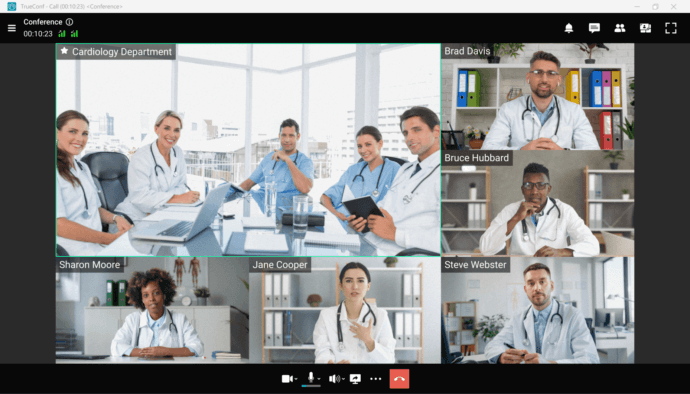
TrueConf is a reliable and advanced video conferencing and collaboration system developed to address the healthcare industry’s particular demands. Unlike numerous cloud-based platforms, TrueConf allows complete on-premises deployment, enabling hospitals, clinics, and research centers to manage all communications within their own secure infrastructure. This setup grants healthcare organizations total authority over sensitive data while maintaining compliance with strict privacy frameworks such as HIPAA, GDPR, and local medical regulations.
The solution supports effortless cooperation across departments and facilities through high-quality video meetings, online consultations, and protected messaging. TrueConf functions seamlessly on desktop, mobile, and conference room equipment, providing accessibility for healthcare experts in a variety of settings. Its architecture emphasizes security, dependability, and interoperability with medical systems, positioning it as a preferred choice for telemedicine and internal communications.
Key Features for the Healthcare Sector
- On-premises video conferencing for internal telemedicine and staff collaboration
TrueConf may be fully implemented within a healthcare organization’s private infrastructure, ensuring that all video sessions, chat interactions, and shared materials remain under local governance. This setup enables institutions to maintain secure operations even in isolated or restricted networks, eliminating reliance on third-party cloud services.
- End-to-end encryption
All communications in TrueConf are secured with comprehensive end-to-end encryption and advanced security mechanisms. This ensures that confidential patient data stays fully protected during consultations, briefings, and collaborative meetings, aligning perfectly with healthcare compliance standards.
- Virtual waiting rooms and permission-based roles for managing sessions
TrueConf offers features specifically tailored for telemedicine workflows. Virtual waiting areas allow patients to connect safely and wait until a physician initiates the consultation, while role-based permissions guarantee that only approved personnel gain access to designated sessions, medical records, or video discussions.
- Integration with hospital information systems (HIS) and medical devices
The solution integrates effortlessly with HIS, electronic health record (EHR) systems, and diagnostic imaging equipment. This enables practitioners to retrieve patient data, clinical results, and consultation records directly inside the meeting interface, simplifying procedures and increasing productivity.
- Offline availability and local LAN functionality
TrueConf is capable of operating entirely within a local area network (LAN), retaining complete functionality without internet connectivity. This ensures uninterrupted performance in healthcare facilities with limited or restricted access and maintains system reliability during network interruptions or outages.
2. TigerConnect
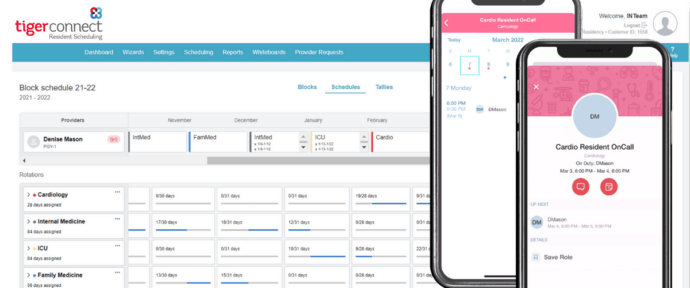
TigerConnect represents a leading healthcare communication and coordination platform designed to unite medical professionals through secure, instant messaging, calls, and conferencing. It replaces traditional systems such as pagers or insecure texts with a unified, HIPAA-certified environment built exclusively for hospitals, care centers, and medical institutions. Through its cloud-powered infrastructure, TigerConnect reduces delays, streamlines collaboration, and significantly improves patient management throughout the broader healthcare ecosystem.
Key Features for the Healthcare Sector
- HIPAA-compliant encrypted messaging
TigerConnect provides protected, real-time messaging between doctors, nurses, and support staff. Each message, image, or document remains safeguarded during both sending and storage, ensuring continuous adherence to HIPAA, HITECH, and SOC 2 compliance standards.
- Unified voice and video communication
Clinical teams can start private voice or video sessions instantly within the same conversation window. This option enables medical professionals to analyze cases, hold remote consultations, and coordinate time-sensitive responses without switching between multiple applications.
- Smart notifications and escalation processes
The platform features automated notification systems that forward important alerts to responsible personnel. Adjustable escalation settings guarantee that critical communications are never ignored, helping improve response efficiency during emergencies and urgent scenarios.
- Smooth integration with EHR and other systems
TigerConnect integrates efficiently with popular electronic medical record (EMR) systems, nurse call applications, and scheduling tools. This connection enables automatic data updates, lab results synchronization, and real-time visibility across every department and care division.
- Comprehensive data insights and metrics
Built-in reporting modules provide deep understanding of message delivery, response timeliness, and collaboration performance. Management teams can use these analytics to assess employee engagement, discover workflow issues, and implement ongoing enhancements throughout the clinical communication chain.
3. Staffbase
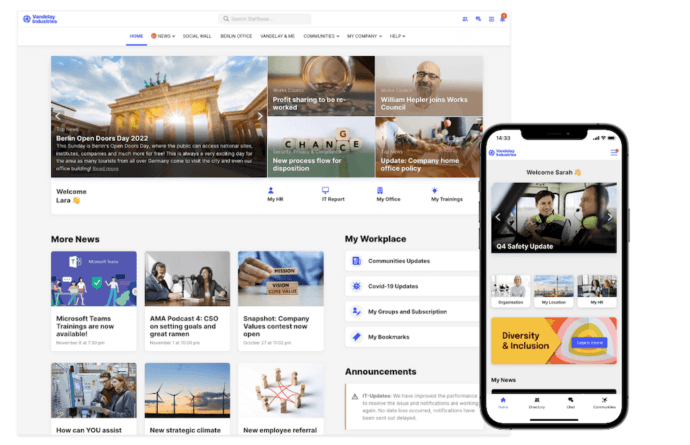
Staffbase is an all-inclusive employee communication and engagement solution developed to unite large, geographically dispersed healthcare enterprises. It concentrates on strengthening internal collaboration among physicians, nurses, administrative teams, and support workers by offering a centralized space for updates, news, and shared materials. Unlike clinical communication platforms that manage patient-related data, Staffbase promotes organizational cohesion, employee participation, and operational visibility across hospitals and healthcare networks.
With its mobile-first and cloud-based framework, Staffbase enables healthcare organizations to effectively connect with every worker — from front-line caregivers to executive teams — through an intuitive, customized app and contemporary intranet. It enhances collaboration, maintains unified messaging, and reinforces compliance with internal communication policies across departments and sites.
Key Features for the Healthcare Sector
- Targeted communication and content segmentation
Staffbase empowers administrators to distribute focused messages and announcements to designated groups, divisions, or physical locations. This approach ensures each employee receives only pertinent information, helping minimize overload and increase clarity during intensive hospital operations.
- Multichannel communication hub
The platform consolidates numerous communication channels — including mobile applications, intranet portals, email, and push alerts — into one cohesive ecosystem. Healthcare professionals can broadcast messages to both office-based and field employees, ensuring that all remain informed regardless of time or duty shift.
- Employee engagement and feedback tools
Staffbase features surveys, interactive feedback forms, and commenting options that enable healthcare personnel to share opinions, raise issues, and assist in organizational progress. This promotes motivation and cultivates an atmosphere of transparency, which is critical in demanding clinical settings.
- Integration with HR and productivity systems
The platform integrates fluidly with current IT infrastructures, including Microsoft 365, HR management software, and Single Sign-On (SSO) capabilities. Such integrations simplify the retrieval of key files, training modules, and internal policies, helping staff locate all necessary resources in one place.
- Analytics and communication insights
Comprehensive analytics panels monitor engagement statistics, message reach, and content effectiveness. Communication leaders can evaluate which updates achieve the strongest impact, identify less-connected departments, and refine overall strategies for enhanced internal alignment.
4. Symplr
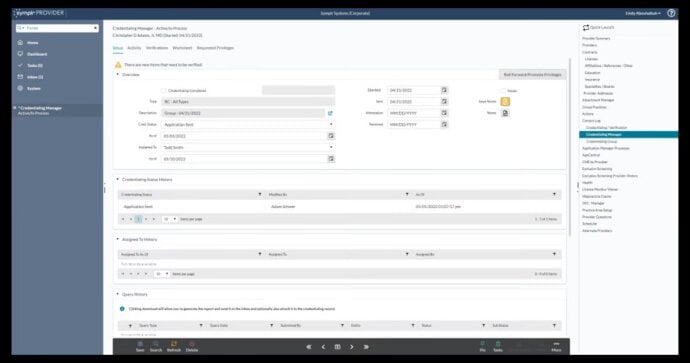
Symplr is a prominent healthcare governance and operations solution that assists hospitals and medical networks in overseeing compliance, workforce efficiency, and professional credentialing. Unlike standard communication systems, Symplr concentrates on the structural foundation of healthcare institutions — ensuring every employee, contractor, and supplier fulfills regulatory and credentialing obligations. Its centralized platform unites workforce administration, provider verification, and compliance oversight within a secure, cloud-based environment.
Key Features for the Healthcare Sector
- Workforce and scheduling management
The solution offers advanced features for overseeing staff timetables, recording attendance, and distributing workloads. Healthcare managers can align workforce capacity with patient flow, preventing exhaustion and strengthening the quality of care delivery.
- Regulatory and compliance tracking
Symplr simplifies compliance supervision by aligning employee credentials and internal policies with regional, national, and institutional regulations. Interactive dashboards highlight potential compliance risks and automatically issue alerts before licenses or certifications reach expiration.
- Analytics and performance insights
Integrated analytics provide healthcare leaders with real-time visibility into workforce output, compliance metrics, and departmental efficiency. These insights empower data-driven optimization and assist in long-term strategic planning for staffing and credentialing initiatives.
- Integration with hospital and HR systems
Symplr connects effortlessly with electronic health record (EHR) software, HR platforms, and learning management systems (LMS). This integration keeps all staff credentials, records, and training data synchronized, ensuring operational consistency across the organization’s ecosystem.
5. Connecteam
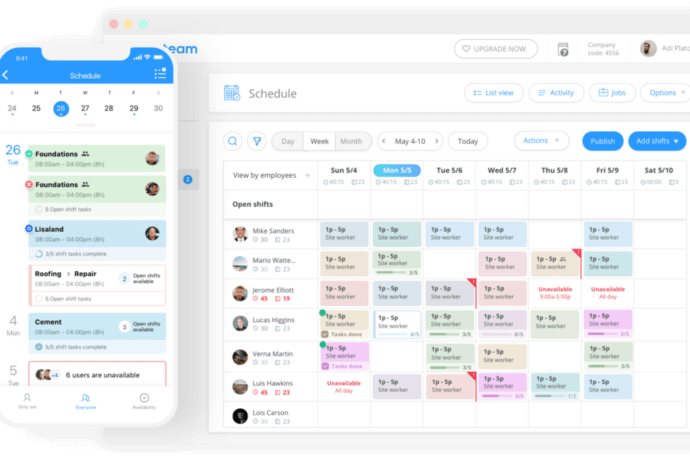
Connecteam functions as an all-inclusive employee management and communication solution developed to support mobile, remote, and field-based personnel — making it a perfect choice for healthcare institutions managing large, dispersed teams such as hospitals, clinics, rehabilitation centers, and home-care organizations. The system unifies messaging, task supervision, scheduling, and training into a single mobile-friendly interface, allowing healthcare providers to enhance coordination and sustain consistent engagement across their entire workforce.
By combining team communication and operational management within one integrated environment, Connecteam enables healthcare administrators to handle rotations, share notices, and collect feedback without relying on separate applications or inefficient manual procedures. It becomes particularly valuable in medical workplaces where staff members are frequently moving and need quick, dependable access to essential details.
Key Features for the Healthcare Sector
- Shift scheduling and attendance tracking
Connecteam optimizes staff management with easy-to-use scheduling tools that let supervisors arrange work shifts, register participation, and oversee instant modifications. Employees can log their time directly through the mobile platform, ensuring accurate monitoring and reducing administrative burden.
- Internal messaging and organizational updates
The system offers encrypted communication channels, announcement boards, and unified feeds that help managers distribute critical messages about protocols, education initiatives, or emergency notifications. It ensures every healthcare professional — from specialists to on-site nurses — receives synchronized updates promptly.
- Task distribution and checklist oversight
Medical coordinators can delegate specific procedural checklists, equipment maintenance tasks, and patient-care actions to designated personnel. This structure strengthens responsibility, confirms timely completion, and ensures compliance with institutional and clinical policies.
- Learning and staff onboarding resources
Connecteam supports continuous education through digital orientation flows, interactive lessons, and knowledge assessments. Healthcare LMS companies can upload customized materials, track user advancement, and verify that employees comply with both organizational and regulatory guidelines.
- Digital forms and automated workflows
Conventional paperwork is replaced by electronic submissions, enabling healthcare professionals to complete reports, evaluations, or safety inspections directly from smart devices. This transformation minimizes manual effort, improves data precision, and boosts productivity throughout medical departments.
6. OnPage
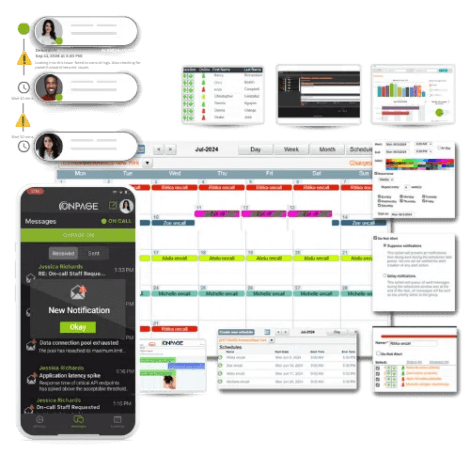
OnPage serves as a specialized incident management and encrypted communication solution engineered for medical organizations that require fast, consistent, and regulation-compliant interaction during critical situations. Designed specifically for hospitals, urgent care units, and on-duty clinicians, OnPage replaces outdated pagers and fragmented alerting tools with a unified, HIPAA-approved digital structure.
The system ensures that urgent notifications and high-priority updates reach the proper medical professional instantly — regardless of location or working conditions. Through automated escalation procedures, detailed audit documentation, and effortless integration with healthcare IT environments, OnPage improves emergency collaboration, reduces communication gaps, and empowers caregivers to deliver swift, coordinated patient assistance.
Key Features for the Healthcare Sector
- Encrypted Bi-directional messaging
OnPage provides secure, real-time interaction among doctors, nursing personnel, and administrative teams. Messages can include patient records, clinical findings, and image files, all protected with HIPAA-grade encryption to guarantee confidentiality and traceability.
- Advanced alerting and escalation mechanisms
This platform replaces legacy pagers through sophisticated routing automation. Important notifications trigger repetitive reminders until acknowledged, and if the first responder does not confirm receipt, the system automatically redirects to another available team member, ensuring no essential message goes unattended.
- Automated scheduling and shift management
OnPage features a robust on-call planning component integrated with healthcare workflows. Managers can structure rotation schedules, assign tasks, and ensure that alerts reach the appropriate specialists based on current availability and role requirements.
- Integration with EHR and clinical systems
OnPage interfaces seamlessly with major electronic medical record (EMR) databases, monitoring technologies, and incident response tools. This synchronization supports real-time alerting for lab findings, system issues, or patient condition updates, immediately informing the responsible on-call personnel.
7. OhMD
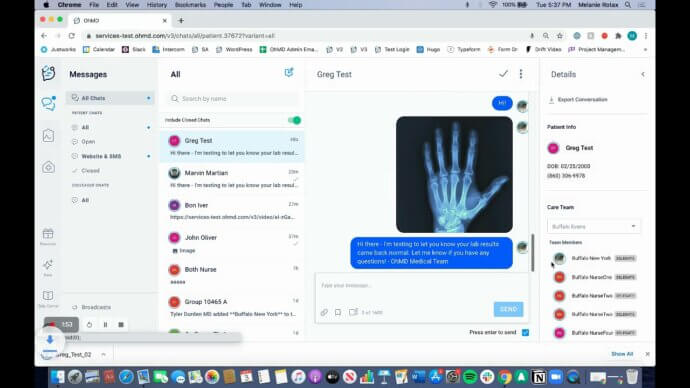
OhMD functions as a patient communication and engagement platform that bridges the gap between healthcare professionals and their patients through streamlined, encrypted, and HIPAA-certified conversations. Created to make healthcare interaction as simple as texting — while maintaining complete confidentiality — OhMD empowers hospitals, medical offices, and private practices to reach patients instantly, automate reminders, and perform virtual consultations without requiring complex installations or login procedures.
With its intuitive design and focus on accessibility, OhMD increases patient loyalty, reduces appointment cancellations, and refines clinical operations. It eliminates redundant phone interactions and paperwork, enabling care teams to manage all patient communications efficiently within a unified, centralized platform.
Key Features for the Healthcare Sector
- HIPAA-compliant secure text messaging
OhMD allows healthcare professionals to exchange protected messages with patients via an easy-to-use, chat-like interface. Each message remains fully encrypted and adheres to HIPAA privacy protocols, ensuring that confidential health information (PHI) is always secure and tamper-free.
- Telemedicine and video consultations
The solution includes built-in video meeting tools that facilitate remote care sessions. Patients can easily access telehealth visits using their mobile devices — without extra downloads or registration — simplifying online consultations and enhancing follow-up experiences.
- Automated scheduling and digital forms
Clinics can create automated appointment reminders, check-in directions, and post-visit messages. OhMD also provides online intake documents and questionnaires that patients can fill out beforehand, improving efficiency and reducing the overall administrative burden.
- Group announcements and communication campaigns
Healthcare organizations can send mass notifications or targeted messages to specific patient segments, including reminders for screenings, vaccinations, or policy changes. This capability increases engagement and fosters continuous, proactive communication between providers and patients.
- Seamless EHR and practice system integration
OhMD integrates effortlessly with prominent electronic health record (EHR) solutions and practice management platforms, enabling automated data exchange, consistent documentation, and smoother workflows throughout the entire healthcare communication process.
How I Chose the Best Clinical Communication Software
Selecting the most reliable clinical communication platform for a healthcare institution involves far more than basic feature comparison — it requires an in-depth analysis of security, practicality, regulatory compliance, and future scalability. For this evaluation, over thirty leading communication and collaboration tools designed for hospitals, clinics, and medical practices were extensively reviewed. Each system was examined using real-world clinical scenarios, applicable regulations, and its measurable operational effect over extended periods of time.
Outlined below are the core considerations that influenced the selection framework:
HIPAA and GDPR Compliance — Protecting Sensitive Patient Data
Maintaining patient privacy forms the foundation of modern clinical communication. Every platform featured here complies with stringent international standards such as HIPAA (for the United States) and GDPR (for the European Union). This ensures all categories of patient records — including messages, audio notes, and shared diagnostic imagery — remain encrypted, securely managed, and visible only to verified medical staff. Platforms demonstrating clear compliance documentation and established Business Associate Agreements (BAAs) were prioritized during selection.
The Department of Health of Ho Chi Minh City|Case Study
TrueConf video collaboration solution connected more than 100 hospitals in Ho Chi Minh and allowed converting quarterly medical examination and treatment briefings between the Department of Health and hospitals into online mode. 660 employees of the City Oncology Hospital can now collaborate with one another without any barriers, increasing both speed and efficiency of communications.
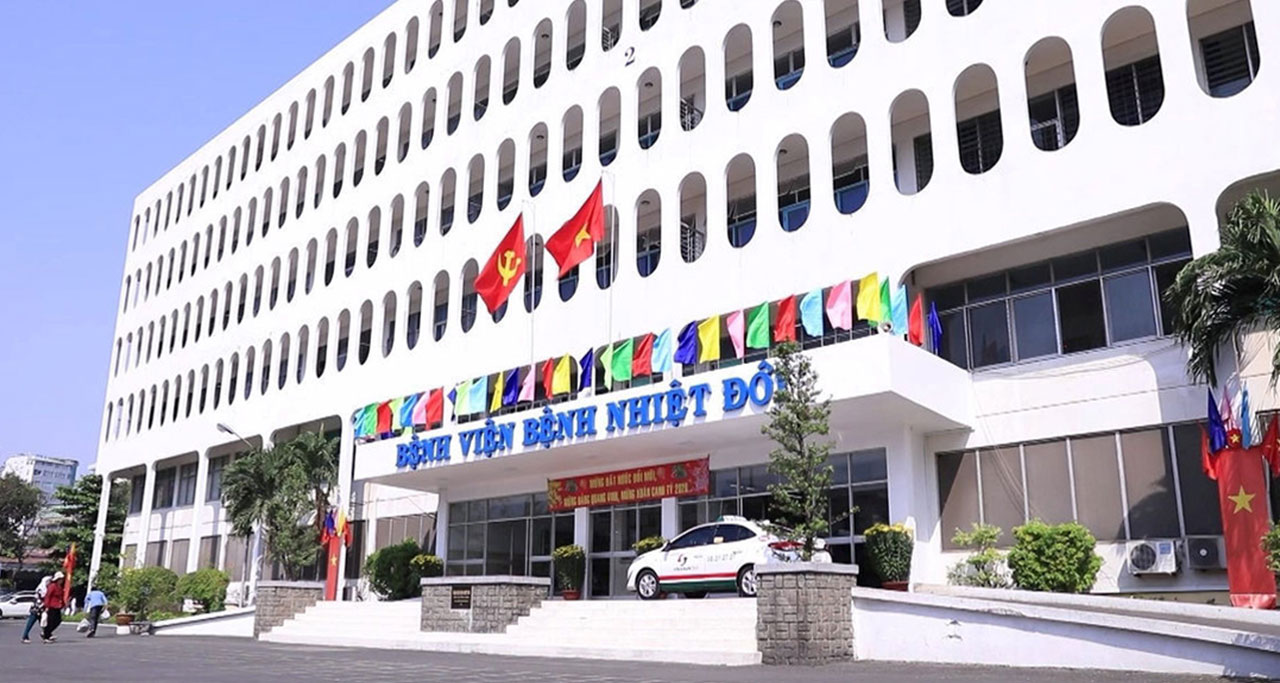
Security Capabilities — Encryption, Authentication, and Control
Beyond legal compliance, powerful technical safeguards were viewed as essential. The most advanced systems apply end-to-end encryption, multi-layer authentication, protected cloud infrastructure, and granular permission management. These measures defend sensitive information from potential data leaks, unauthorized intrusion, or accidental disclosure, preserving trust and stability throughout clinical operations.
Ease of Adoption — Built for Demanding Healthcare Settings
Healthcare professionals function in fast-paced, high-pressure environments where precision and efficiency are paramount. Priority was given to tools with intuitive interfaces, fast setup, and minimal training requirements. Platforms that simplified communication rather than complicating it — featuring real-time notifications, effortless scheduling, and optimized mobile usability — achieved the highest ratings for user experience.
Integration Capabilities — Unified Connectivity with EHR and Hospital Systems
A clinical communication platform should not exist in isolation. Each solution was evaluated for its integration flexibility with Electronic Health Records (EHR), Hospital Information Systems (HIS), appointment schedulers, and other operational modules. Seamless interoperability reduces repetitive entries, eliminates manual data errors, and provides healthcare professionals with a connected digital ecosystem for efficient communication and improved patient care coordination.
Healthcare-Specific Functionality — Tailored to Clinical Needs
General collaboration tools frequently overlook the distinct complexities of healthcare operations. For this reason, attention was given to platforms offering healthcare-oriented capabilities such as telehealth conferencing, encrypted patient communication, on-call notifications, and regulatory reporting. Solutions supporting both internal team coordination and external patient interaction proved to be especially effective and valuable.
Deployment Flexibility — Cloud, Hybrid, or On-Premises Options
Each healthcare institution operates under distinct infrastructure frameworks and security protocols. While some organizations prioritize the scalability of cloud-hosted platforms, others depend on on-premises setups to maintain complete authority over their data. Priority was given to solutions that provide adaptable deployment options — enabling hospitals to select configurations that align best with their IT standards and regulatory obligations.
Value for Money — Scalability and Long-Term Sustainability
Affordability was another crucial consideration. Evaluation included not only the upfront price but also scalability potential, ongoing maintenance expenses, and the variety of capabilities offered across subscription levels. Because long-term sustainability often depends on custom functionality and deep system compatibility, partnering with a reliable healthcare software development service is crucial for future-proofing your IT investments. The most beneficial platforms are those that evolve alongside the organization, providing sustainable pricing structures and dependable support while preserving both functionality and data security.
Conclusion
As the healthcare landscape advances toward digital-first service models, selecting the appropriate clinical communication software becomes increasingly critical. Whether the need is for a secure video platform such as TrueConf, a centralized messaging solution like TigerConnect, or a patient-focused system like OhMD, the right technology can greatly enhance coordination of care, strengthen compliance, and boost overall patient satisfaction throughout 2025.
Related posts:
Best HIPAA-Compliant Messaging Tools
Secure Messaging in Healthcare: The Ultimate Guide
Telehealth: Technology in Medicine
About the Author
Olga Afonina is a technology writer and industry expert specializing in video conferencing solutions and collaboration software. At TrueConf, she focuses on exploring the latest trends in collaboration technologies and providing businesses with practical insights into effective workplace communication. Drawing on her background in content development and industry research, Olga writes articles and reviews that help readers better understand the benefits of enterprise-grade communication.




Follow us on social networks